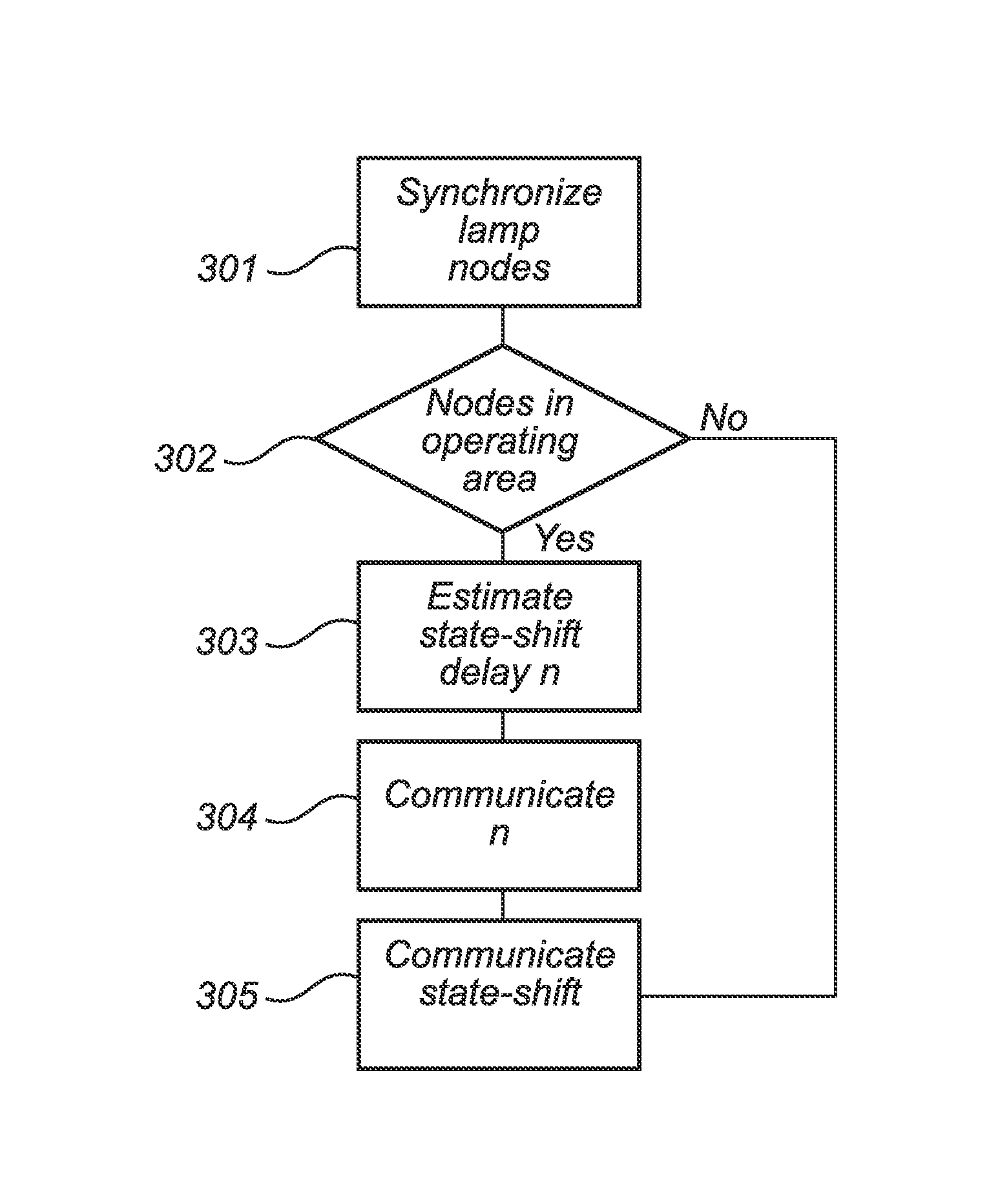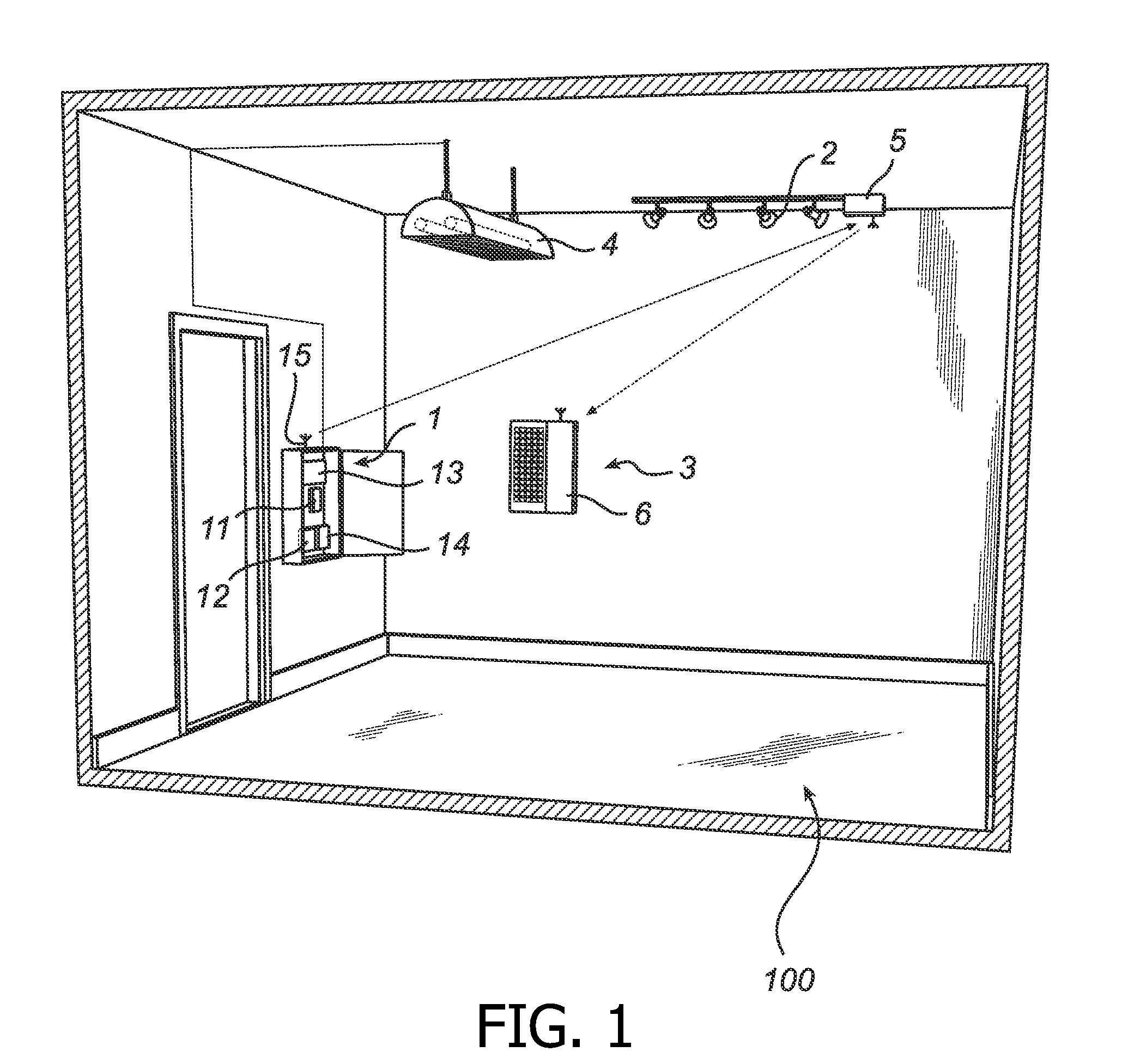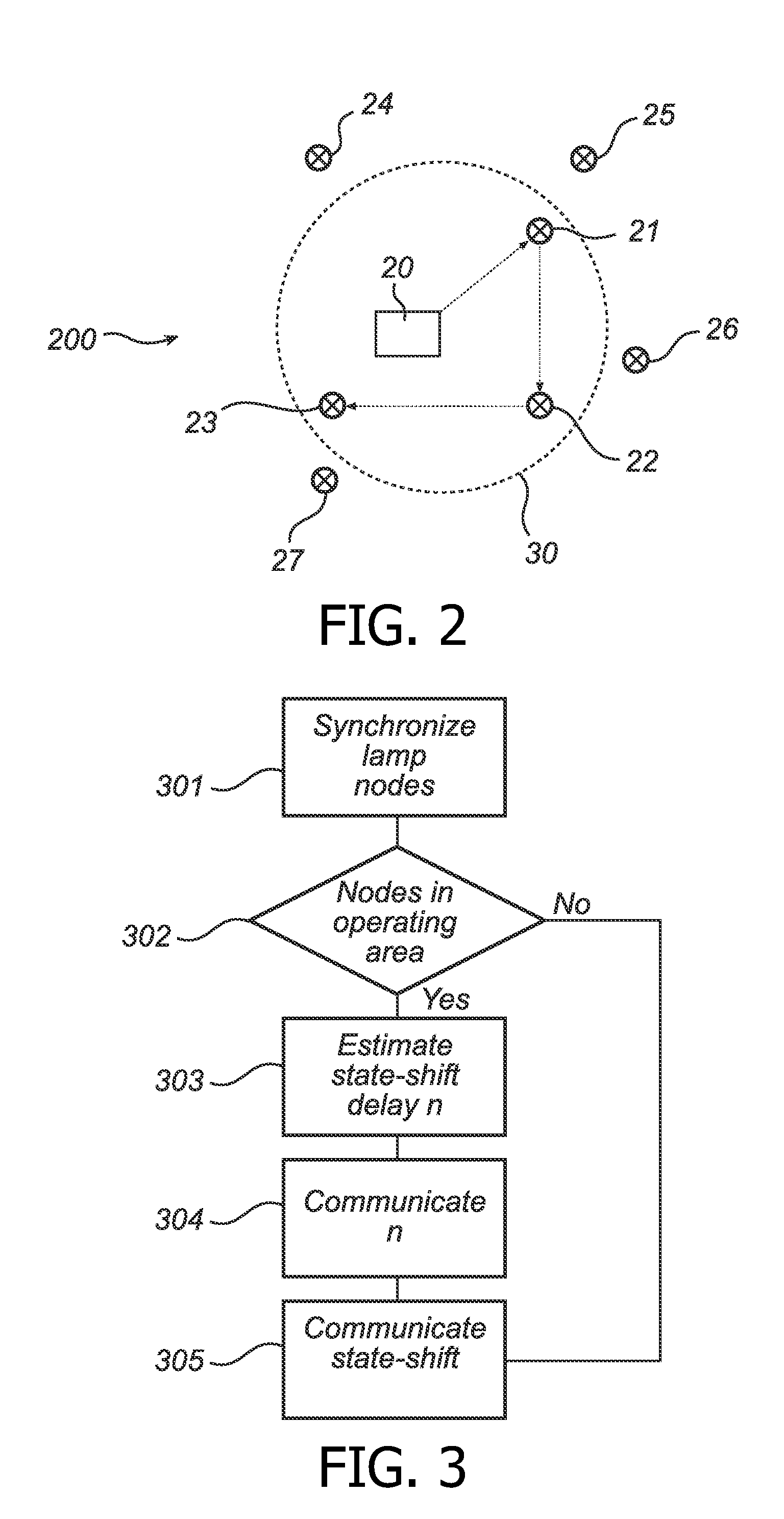Method of controlling a lighting system
a lighting system and control command technology, applied in the field of lighting system control, can solve the problems of different delays in the reception of different control commands for different light source nodes, different delays, and unpleasant visual impression of the state-shift, such as wake-up or switch off lights, and achieve the effect of improving the visual effect of the state-shi
- Summary
- Abstract
- Description
- Claims
- Application Information
AI Technical Summary
Benefits of technology
Problems solved by technology
Method used
Image
Examples
Embodiment Construction
[0032]The present invention will now be described more fully hereinafter with reference to the accompanying drawings, in which currently preferred embodiments of the invention are shown. This invention may, however, be embodied in many different forms and should not be construed as limited to the embodiments set forth herein; rather, these embodiments are provided for thoroughness and completeness, and fully convey the scope of the invention to those skilled in the art. Like reference characters refer to like elements throughout.
[0033]Referring now to the drawings and to FIG. 1 in particular, a lighting system 100 is depicted illustrating an exemplifying system in which the method of the present invention may be performed. The lighting system 100 comprises a controller 1 and a plurality of light source nodes 2, 3, 4 coupled together to form a network. For simplicity of explanation, there are only one controller 1 and three operating nodes 2, 3, 4, in the lighting system 100. Here, t...
PUM
 Login to View More
Login to View More Abstract
Description
Claims
Application Information
 Login to View More
Login to View More - R&D
- Intellectual Property
- Life Sciences
- Materials
- Tech Scout
- Unparalleled Data Quality
- Higher Quality Content
- 60% Fewer Hallucinations
Browse by: Latest US Patents, China's latest patents, Technical Efficacy Thesaurus, Application Domain, Technology Topic, Popular Technical Reports.
© 2025 PatSnap. All rights reserved.Legal|Privacy policy|Modern Slavery Act Transparency Statement|Sitemap|About US| Contact US: help@patsnap.com



